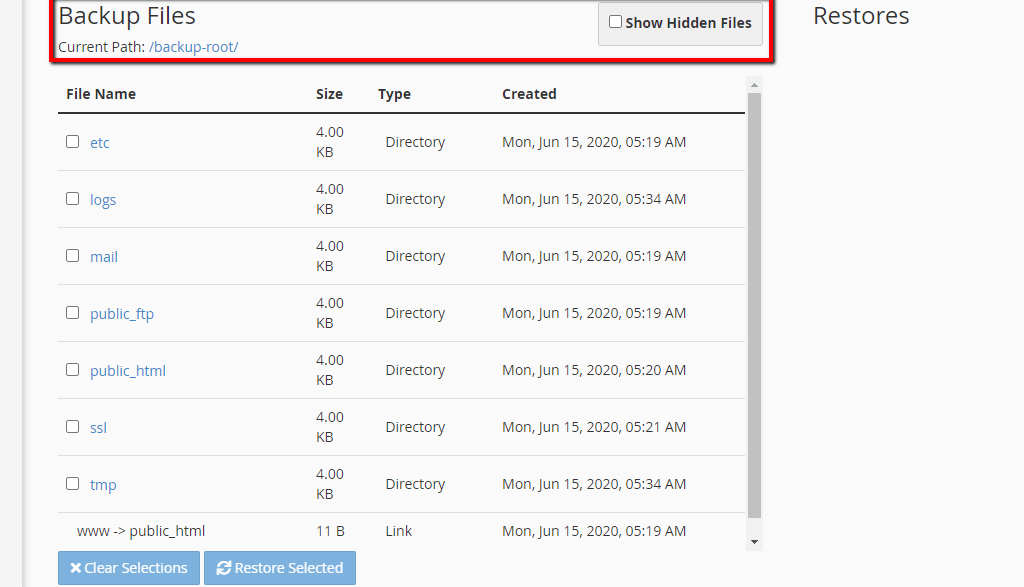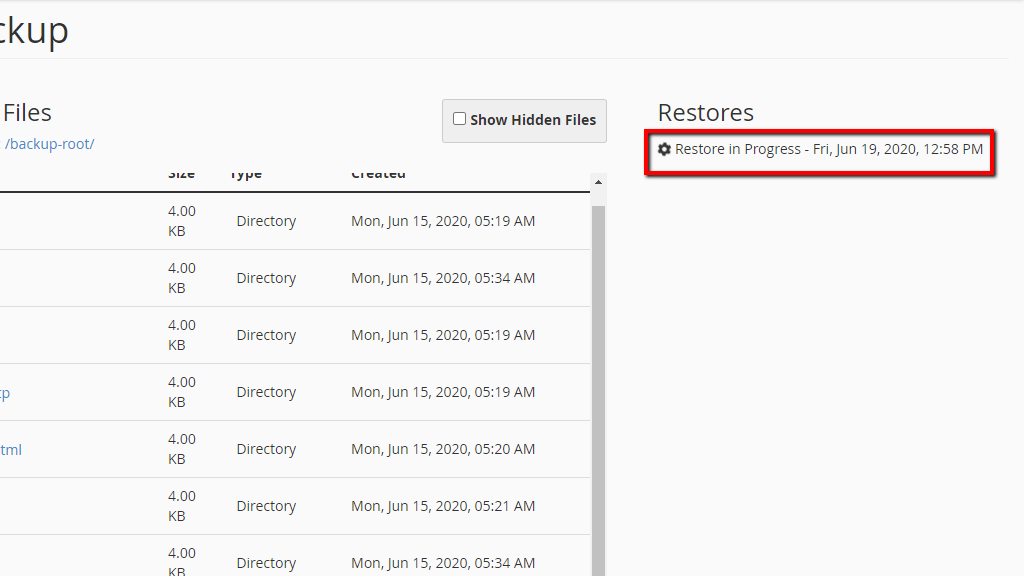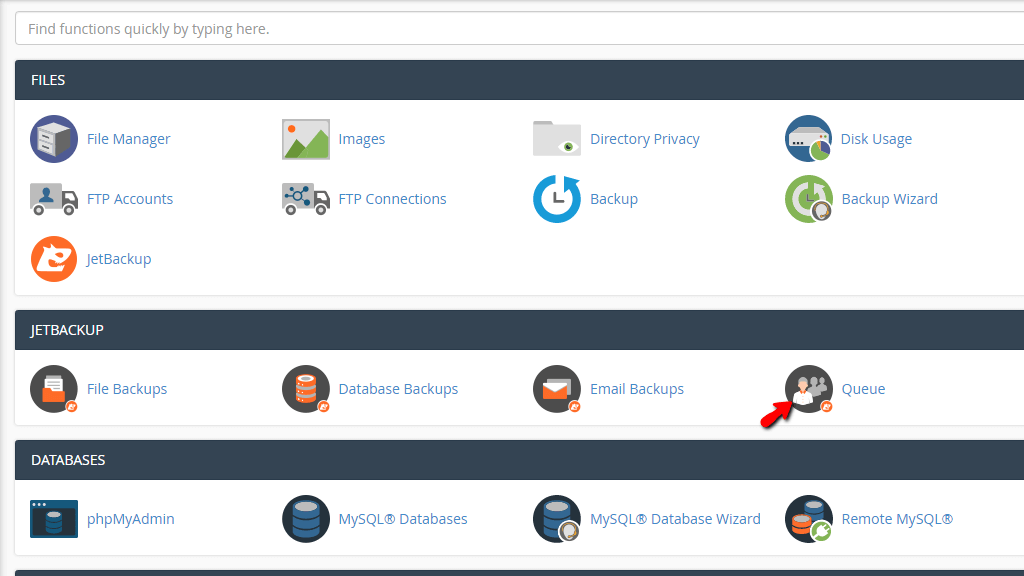Introduction #
Having your website’s files backed is an absolute must. Imagine pushing changes in your website’s code, and suddenly, you find out that you have irreversibly damaged it. Or you log in one day, and you see that your site has been compromised because you missed a security patch release for your application. If your website is hosted on HostArmada, then you are in good hands, as we provide our clients with available backups that you can restore whenever needed. In this tutorial, we are going to talk about the “File Backup” feature under the “JetBackup” tool that allows you to bring back a previous version of your website’s files from at least 14 days back, based on your shared hosting plan. Let’s get started!
Getting Started #
For a start, you will have to log in to the cPanel account.
Once logged into the cPanel service, you will see several sections with different icons.
For achieving the goal of this tutorial, you will have to click on the “File Backup” icon, which is located under the “JetBackup” features group.
Once pressed, you will be redirected to a new section, which will contain a table section populated with all of the available file backups.
Restoring Website Files #
As mentioned above, upon landing on the “File Backup” page, you will notice a table section containing all your backups.

Let’s go over all the columns and explain what kind of information they contain.
- Creation Date – This column displays the date on which the backup is created. It will typically contain at least 7 copies for the past 7 days. Note that, the number of available backups varies, based on your shared hosting plan.
- Size – This column indicates the size of the backed-up files.
- Notes – This column contains notes added to the backup if any. To add a note, all you need to do is click on the “Click to add Note…” label on the corresponding row.
- Location – This column shows the location of the backup. It can be either remote or local.
- Actions – This column contains the available actions that you can perform with the file backup. In this case, it is the “File Manager” button, which allows you to list the files in the account in a similar fashion to the cPanel’s actual File Manager.
To restore files from a specific backup, please click on the corresponding “File Manager” button. As mentioned above, clicking on the “File Manager” will redirect you to a page that will resemble your hosting account directories.

On the top, you will see the “Backup Files” label. Underneath, you will see the “Current Path:” which will show you the “/backup-root/” directory, as this is where your backups are located! On the top right corner, you will see a “Show Hidden Files” checkbox, which you can tick if you want to restore hidden files, such as the “.htaccess” file.
Underneath, you will find a table section which contains, populated with your files. Let’s go over all the columns and what they represent.
- File Name – This column shows the name of the directory or file that was backed up. It also contains checkboxes that are used to select the directory or file you want to restore. Multiple tick boxes can be selected at once.
- Size – This column shows the size of the backed-up directory or file.
- Type – This column shows the file’s type. This can be a directory, a file, or a link.
- Created – This column displays the date on which the backup was created.

Once you have selected the file you want to restore, the two buttons on the bottom will become active. The “Restore Selected” button will allow you to initiate the restoration process, while the “Clear Selections” button will untick all the checkboxes.
For the purpose of this tutorial, we have selected the public_html folder, which will contain the files for the primary domain name on the account. Once the “Restore Selected” button is pressed, one more button will present itself underneath – the “Add to Restore Queue” button.

To go ahead with the backup restoration, please press the “Add to Restore Queue” button. Alternatively, please press the “Cancel” link to reverse the process.
After initiating the file restore, please point your attention to the right side of the page. You will see the “Restores” section. Beneath it, you will see a spinning cogwheel icon and a “Restore in Progress” message. This indicates the beginning of the restoration process for the selected file, folder, or link.

Note that you do not need to monitor the restoration process unless it involves work on the files, folders, or links you are currently restoring.
If needed, you can check the progress in the “Queue” feature located under the “JetBackup” section of the cPanel.

Upon clicking on the “Queue” icon, you will be redirected to a page that has yet another table section populated with your most recent file restores.

Let’s go over all the columns under this table section.
- Type – This column shows the type of restore. It could be Files, Databases, or Emails.
- Date – This column displays the date on which the restoration process was started.
- Target – This column indicates the name of the account where the restore is being processed.
- Status – This is the column that you should be most eager to see! It will display either a “Completed”, “Failed” status, or “In Progress” status.
- Action – This column will be empty in case the process had been successfully completed or still in progress.
Once you notice the “Completed” message under the “Status” column, this means that the file restoration is complete, and you can now go and test out your website.
There you have it! The process of restoring your files using the “File Backup” feature of the JetBackup service in cPanel. We hope our instructions were clear enough and helped you to perform the restoration process with ease. If this is something you are not confident doing on your own, you can always request assistance from our Technical Support team by submitting a ticket from your HostArmada Client Area. In the ticket, please include the website or specific files, directories, or links you would like to restore, along with the date from which you want to restore them.




